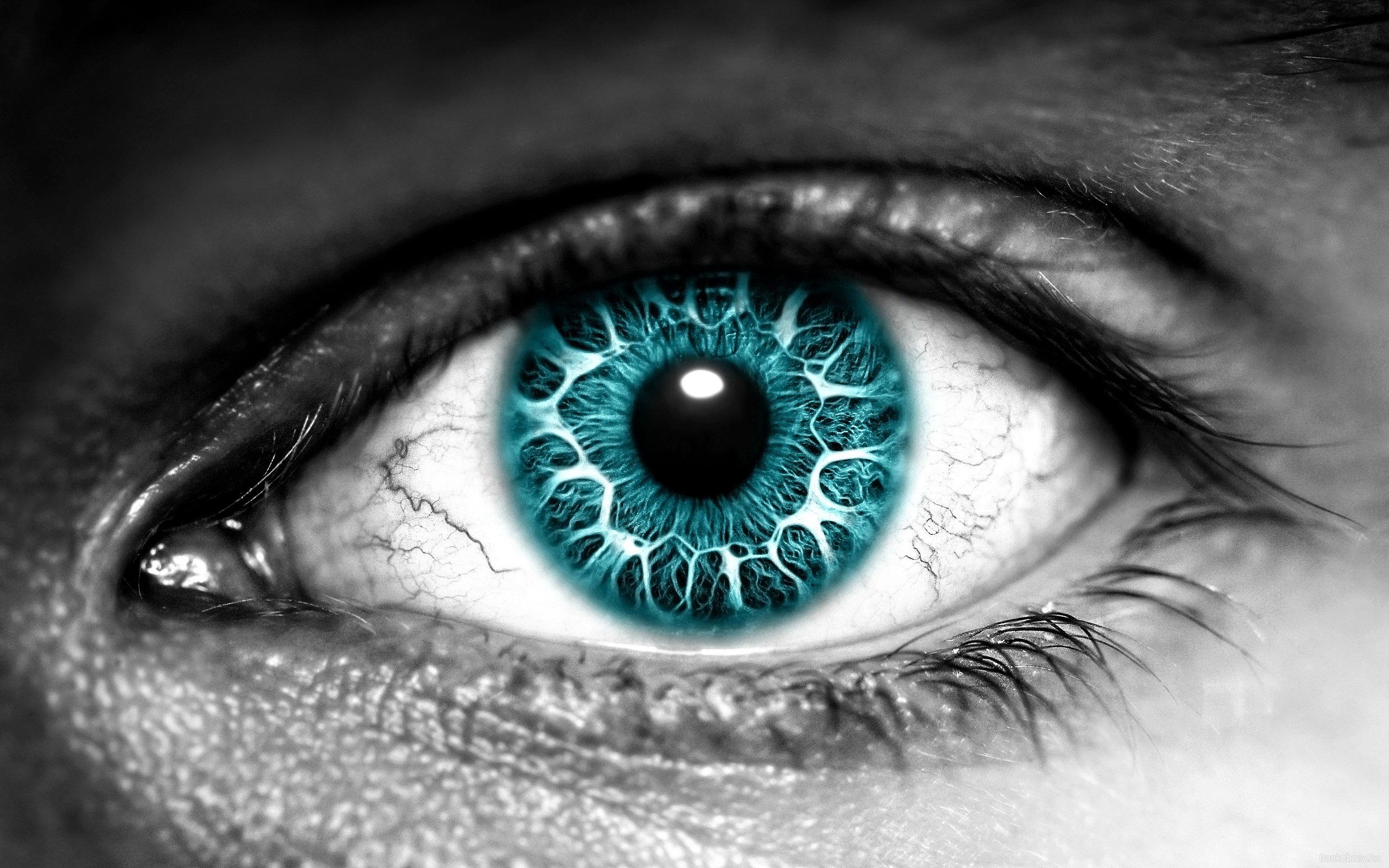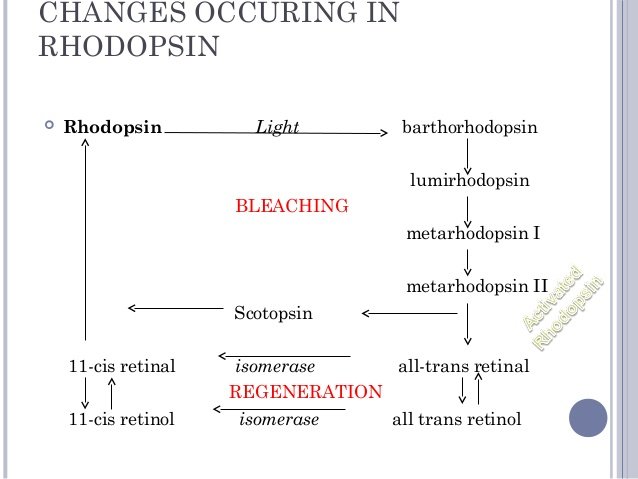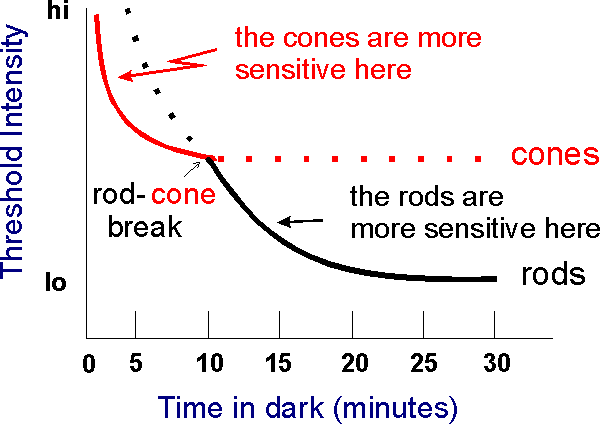Hey Steemians , Welcome to the new fascinating facts which we will be giving an explanation about Why its hard to see in dim light when you come from bright light ?

Our eyes is a organ of sight whereas the vision is a dominant sense . To understand this , firstly we should be knowing about the physiology and the biochemistry of the eye !
Our eyes is not a sphere but an oblate spheroid shaped ! It takes the light in and translate to the images .
So what's the physiology behind the vision ,
- Initiation of vision (phototranduction) , a function of photoreceptors (rods and cones)
- Processing and the transmission of visual sensation , a function of image processing cells of retina .
- Visual perception , a function of visual cortex and related areas of the cerebral cortex (brain)
Generally the pathway for vision is so complicated or intricate !

Fig: Visual pathway
Vision is generated mainly by photo receptors in the Retina , a layer of cells at the back of the eye. The information leaves the eye by way of the optic nerve, and there is a partial crossing of axons at the optic chiasm. After the chiasm, the axons are called the optic tract. The optic tract wraps around the mid brain to get to the lateral geniculate nucleus (LGN), where all the axons must synapse. From there, the LGN axons fan out through the deep white matter of the brain as the optic radiations, which will ultimately travel to primary visual cortex, at the back of the brain.
Since the physiology is complex for you , I have summarized here ,

Fig: Rods and Cones
The rods and the cones are mainly the sensory nerve endings for visual sensation.When normally, the light falls on retina , it causes a photochemical change which in turn triggers the cascade of biochemical changes that generates electrical impulse . The phototransduction is usually called as the conversion of the light energy into the electrical nerve impulse .
So What's the photochemical change in here ?
Rhodopsin refers to the pigment present in the rods which is usually called the receptors for night vision (scotopic) vision. the maximum spectrum absorption is around 500 nm. It consists of a protein called Opsin which is coupled with a carotenoid called retinine (vitamine A aldehyde or 11-cis-retinal). When light falls on rods, the 11-cis-retinal component of rhodopsin is converted to all-trans-retinal through various stages .
There is a photodecompositin stage/process i.e all -trans-retinal so formed is soon separated from opsin and the rhodopsin is said to be bleached by the action of light .

Fig: Light induced change in Rhodopsin
Visual cycle should be constant . Meaning the constant equilibrium between the photo decomposition and photo regeneration i.e. rate should be equal to that of bleached photochemicals and the rate to the regeneration .

Fig : Visual cycle
Now , What's the electrical change ?
Due to activated rhodopsin, there is trigerring of cascade of biochemical reactions which resuts in generation of receptor potential in the photo receptors. The electrical energy is then transmitted via Visual Pathway.
Generated potential is transmitted by electronic conduction (i.e. no action potential ; but by direct electrical impulse) to the other cells of retina (horizontal , amacrine and ganglion cells) . The phenomenon of processing of visual impulse is very complicated. The visual image is analyzed in both serial and parallel fashion.
In the serial fashion , all the cells from photoreceptors to the lateral geniculate body are involved in increasingly complex analysis of image .
Whereas In the parallel fashion , two kinds of cells can be differentiated in the visual pathway , large (Magno or M cell ) and small (Parvo or P cell)
So, visual pathway is considered to be the two lane large is the magnocellular pathway and small is the parvocellular pathway which can be compared to the two land roads of the vehicle .
Visual perception

It a end product of vision . It can be described as the way the brain interpreted what the eyes see . Complex integration of light sense , form sense , sense of contrast and colour sense. Certain area and receptive field organization of the retina and cortex are used to encode the information of visual image.
The cones have the ability to discriminate between the shape of the object , colour by different wavelengths which excite cone . In the sense of contrast , there is an ability of eye to perceive the slight changes in the luminious between regions which are not seperated by definite boarders .
Minimum brighteness required to evoke a sensation of light is usually called the light minimum .Human eye in its ordinary use,functions just normally throughtout the day over an exceedingly wide range of illumination by a highly complex phenomenon called Visual Adaptation.
The rhodopsin pigment in photoreceptors soon gets bleached after lights falls on it . Rods gets more sensative and gets too much time to get full sensitive to light change It takes in full return to normal around 30 minutes .
So , during the dark adaptation ,
It's just an ability of the eye to adapt itself to decreasing illumination when going from bright sunshine into a dimly lit room . One cannot perceive the every object in the room until some time has elapsed . During this period/time , eye is adapting to low illumination. This time taken to see in the dim illumination is called dark adaptation time.
Dark adaptation depends upon photopigment bleaching, which affects the threshold of both cone and rod cells .
Fig : Dark adaptation curve
During this , since the rods are much more sensitive to the dim illuminated light than cones , Therefore, rods are used in the progressively high rates more in dim light (scotopic vision) .
Thank you ,
Upvote , comment and resteem this post if you guys like it
Follow for more fascinating facts !

